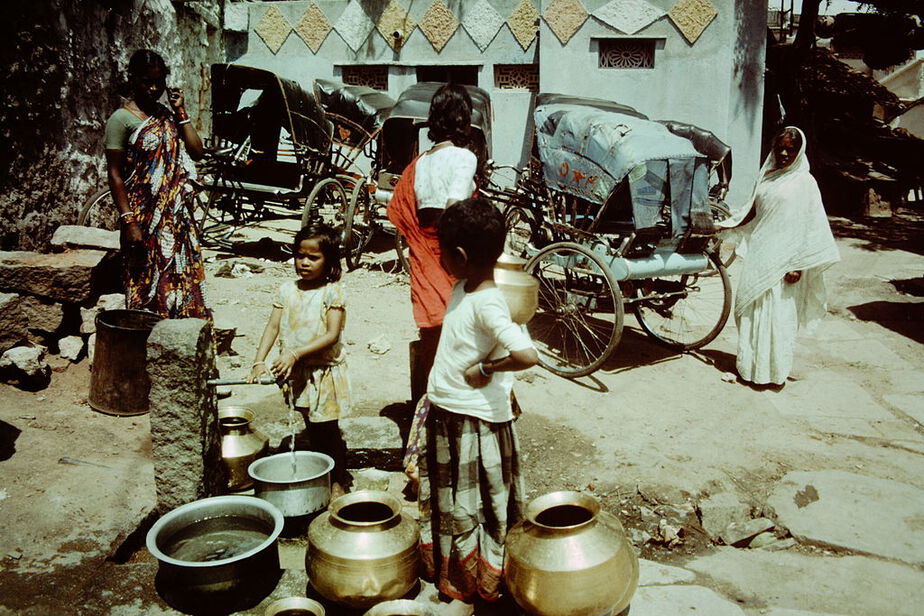Co-authored by Pragya Gupta & Gopika Kumaran
India fails to provide 63 million of its citizens with access to safe, clean water. The water in the nation’s reservoirs has fallen from 39% to 27% of total capacity from last year to this year, according to the Central Water Commission. Any country with less than 1700 cubic metres per capita per year is considered water-stressed. Even with a higher estimate, India has only 1000 cubic meters of water per person. The reality and magnitude of India’s water crisis must be recognized.
Take for instance the presence of sewage effluents in our water; about 70% of India’s water supply is dangerously polluted with these effluents, contaminated by bacteria, viruses, and parasites. The rivers are polluted, and large areas of the country don’t have water fit for drinking or other use. A look at the Yamuna will tell you the same; Haryana’s industrial effluents and municipal waste pollute the Western Yamuna canal water, affecting drinking water supply in Delhi.
It is then no surprise that the limited usable water is under great pressure from India’s growing population.The connection between development and water availability is worth looking at; agriculture, healthcare, sanitation, nutrition, poverty, and inequality are several important issues that are linked to water in many ways.
Agriculture
A major part of our economy is still largely dependent on agriculture; although it accounts for only 18% of GDP, it employs almost 50% of the workforce. The water crisis affects agriculture in a major way. The dependence on monsoon makes the harvest unpredictable, putting livelihoods and the food security of the country at risk. Only 40% of agricultural land has permanent irrigation facilities which reflect the population’s poor access to water.
Take the example of groundwater exploitation as well. A 2016 study found that within 35 years, half the world’s food sources might be threatened and 1.8 billion people won’t have reliable access to water. More than half the wells in India are showing declining groundwater levels; if current trends continue, in 20 years, about 60% of India’s aquifers will be in a critical condition. This vicious cycle, of searching deeper for water as water becomes more scarce, only accelerates the process of digging our own graves. As each farmer pumps and squeezes out all the water they can from individual fields, the country has to deal with an extraction of a massive 251 billion cubic meters of groundwater and the numbers will only grow.
Health
Health and water have a close, interconnected relationship. Good sanitation and water management can make or break the health and hygiene of a nation, and by extension, the productivity level of their human resources. Take the case of diarrhoea for example:
Not having clean water to properly wash hands is a prime cause of diarrhoea. In India, 1.2 lakh children die every year because of this; that’s 13 every hour.
The World Bank reported that 7.8 lakh annual deaths in India are because of a lack of basic requirements like an effective sewage system, safe drinking water supply, sanitary facilities, etc. Chemical and industrial waste contamination can lead to chronic symptoms and severe health issues. High levels of ammonia and similar compounds lead to retarded growth and impact the nervous system. Pregnant women face the brunt of such pollution because the foetus is at the highest risk of being harmed. The availability of clean water can make a huge difference by preventing, disease, malnutrition, and increasing hygiene.
Parting Note
Regions battling a water crisis might see a 6% decline in GDP due to water-related impacts on agriculture, health, and income. If India wants to tackle it’s development issues effectively, it is of utmost importance that the water crisis is re-prioritised and put at the top of the list. The hope in doing so is to create a positive domino effect. As India takes further steps in the direction of development, going back to the roots and focusing on water is the key.
The world’s dependence on water is both direct and indirect, and it is a fundamental part of life on Earth. Rivers were the primary centres around which human civilizations evolved for the first time. Water has even been the cause of major geopolitical conflicts and in this world of rapid economic and demographic expansion, water resource availability is in a major crisis. As a country with the second largest population in the world, India’s needs will only increase, and solving India’s water crisis can catalyse the realisation of her varied developmental goals.
Featured image courtesy Institute for Housing and Development Studies | CC-BY SA 3.0






